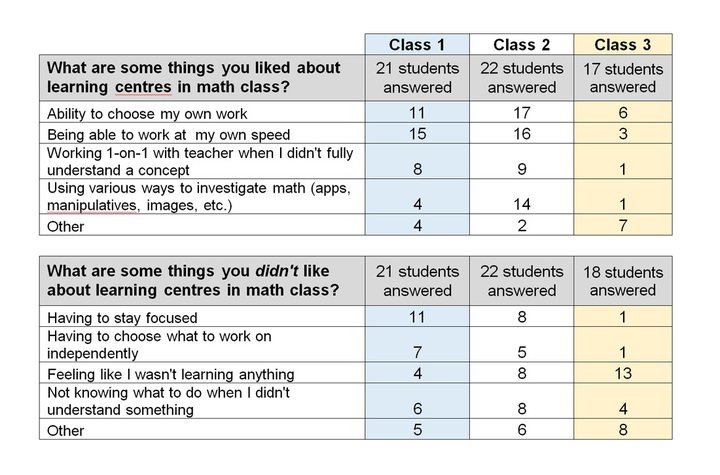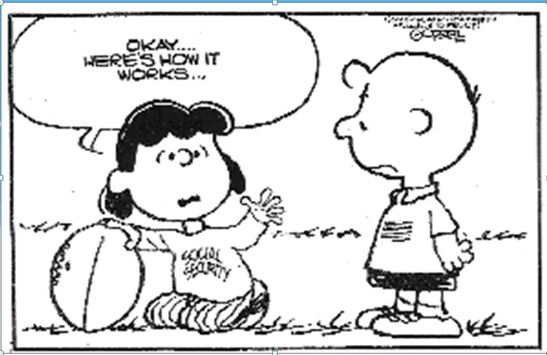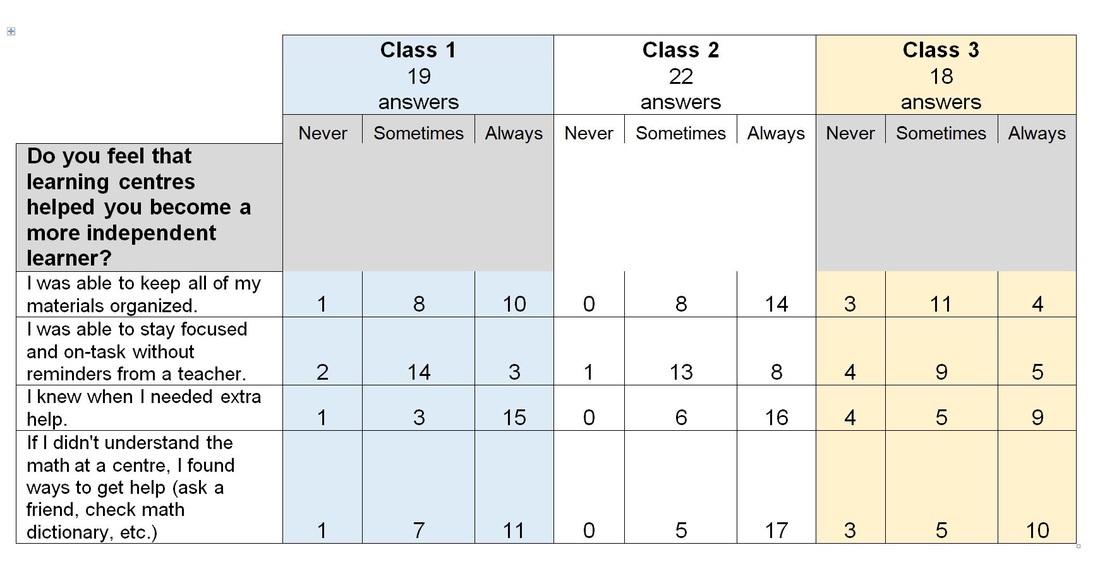We had, of course, collected assessment data to ensure achievement of ministry curriculum expectations, but as this was my first attempt at using this approach, we did not really have a "control" group to compare results to. We also wanted to capture some "student voice" qualitative data that would -- we hoped -- speak to the value beyond purely math concept acquisition.
My instructional coach and I prepared a survey using survey monkey, and invited three of my classes (two Grade 7s and one Grade 8) to complete the survey anonymously.
A Mixed Response
As we suspected would be the case, based on our in-class observations, the responses from the first two classes differed significantly from the third's, both in terms of "select from a menu" type questions, and more open ended responses.
Also, although the first two classes were not unanimous in their appreciation of the centers based model for math instruction, their responses tended to be far more articulate in their breadth and depth -- despite the fact that those classes comprised largely students who were English Language Learners or who had Special Education needs -- than the more negative slant taken by their peers in Class 3.
I personally learn better answering questions from a textbook and taking notes from a teachers lesson, rather than centers. Centers distracts me because I am with friends and sometimes the instructions do not make sense or I just am not sure what I'm suppose to be doing, I prefer working alone writing notes and answering questions in a notebook rather than talking with friends and reading off a card about the activity, but that is my personal opinion because I prefer to work alone.
i didn't really like the centres
The comments from the third class also suggested that these students differed from those in the other two classes in terms of who was responsible for their learning.
In particular, while the first two classes wrestled a bit with having to make their own learning choices and balancing the distraction of working with friends with the benefits of having a peer group to consult when they got stuck, the third class's responses frequently included comments about the teacher "not teaching them anything".
It was clear that the vast majority of the students in this class were desperate for "spoon-feeding", and wanted to be told exactly what to do. Definitely something to consider when planning for future years... I would for sure engage in more communication up front and throughout each centers unit, both with students and their families, about why we are adopting this approach for some of the math units.
Given that I had recently taught younger students and was moving into Grade 7 and 8, I think I had made assumptions about both the students' previous exposure to a more choice-based model of instruction, and the degree to which their learning skills and work habits were developed. In the future, I would spend considerably more time modeling and practising self-regulation skills with students prior to launching a centers-based unit.
Interestingly, despite Class 3's general complaints about the teaching and learning model, many agreed that when they encountered a problem they weren't sure what to do with, they found multiple ways to solve tough problems, including asking peers or teachers and consulting other resources, all skills that will serve them well later in life as they become decision makers, both in post-secondary education and in their chosen professions after their formal schooling ends.
So, although they had less developed foundational skills than I had assumed in terms of established learning skills and work habits, the students' skills in these areas inevitably grew when faced with the challenges presented through math centers.
It was interesting for me as a teacher to reflect on the differences in attitudes towards math centers between the first two classes and the third. What were some of the influences for that class that were different from the first two, and were they things I could modify or change in future years, or were they factors -- like timetabling, behaviour make-up of the class and prejudicial attitudes of the students' families -- that were largely beyond my control?
I was also intrigued by the range in responsiveness within the first two classes as well. For example, from the same class, the following two responses:
The centers are a great idea of helping student like me learn and explore the different activities in the curriculum. | this sucked students should never have to do this ever again |
Centers are the best way to learn more in math. Doing a lesson for like 20 minutes is just a waste of time, especially working in a textbook. I personally learn better answering questions from a textbook.... |
In Summary
Overall, I would say that while teaching through a centers-based model frequently freed me up to work one on one or in small groups with students who needed a little extra support which is what I had hoped it would do, I did miss teaching full class, 3-part lessons during some of my centers units.
I was pleased to find that the centers model did help many students become more independent thinkers and develop habits of mind such as perseverance.
As one student noted,
…some were difficult and really difficult to understand, but I over came with this problem by, speaking with a friend, teacher, any adult in the room. Although it was difficult, I like challenge, so it was a good challenge, that not only taught me a math lesson, but how to overcome a problem.
A balanced approach is -- as one of the more "open" students in Class 3 suggested -- perhaps the best line of attack:
To be honest, i don't really like centres but they're not bad. ...I think we should have both lessons and centres. (and textbook work)





 RSS Feed
RSS Feed